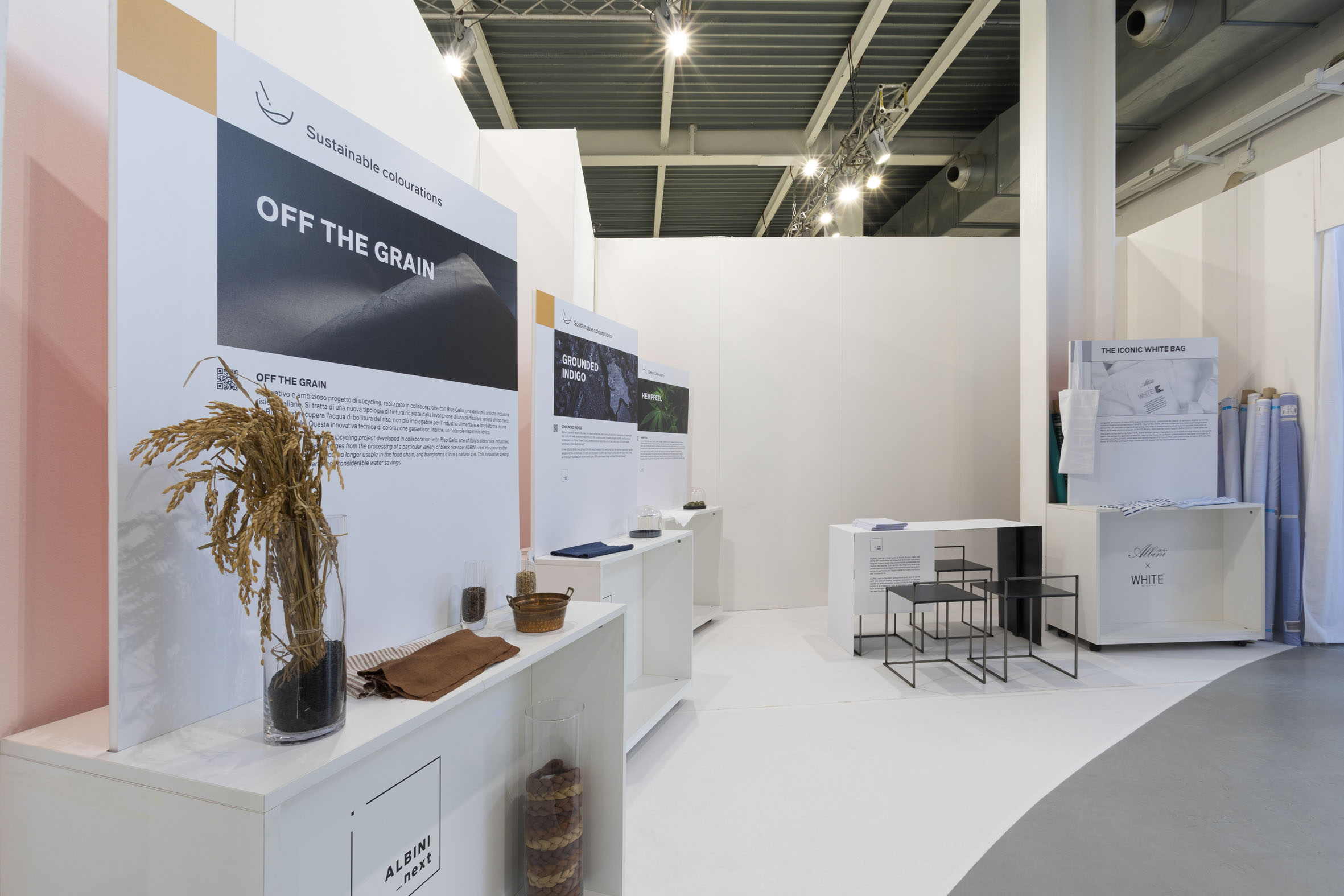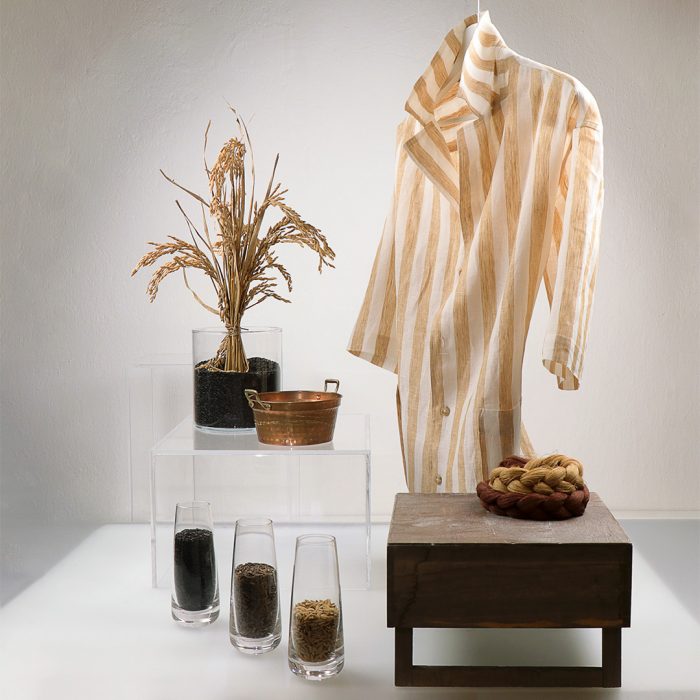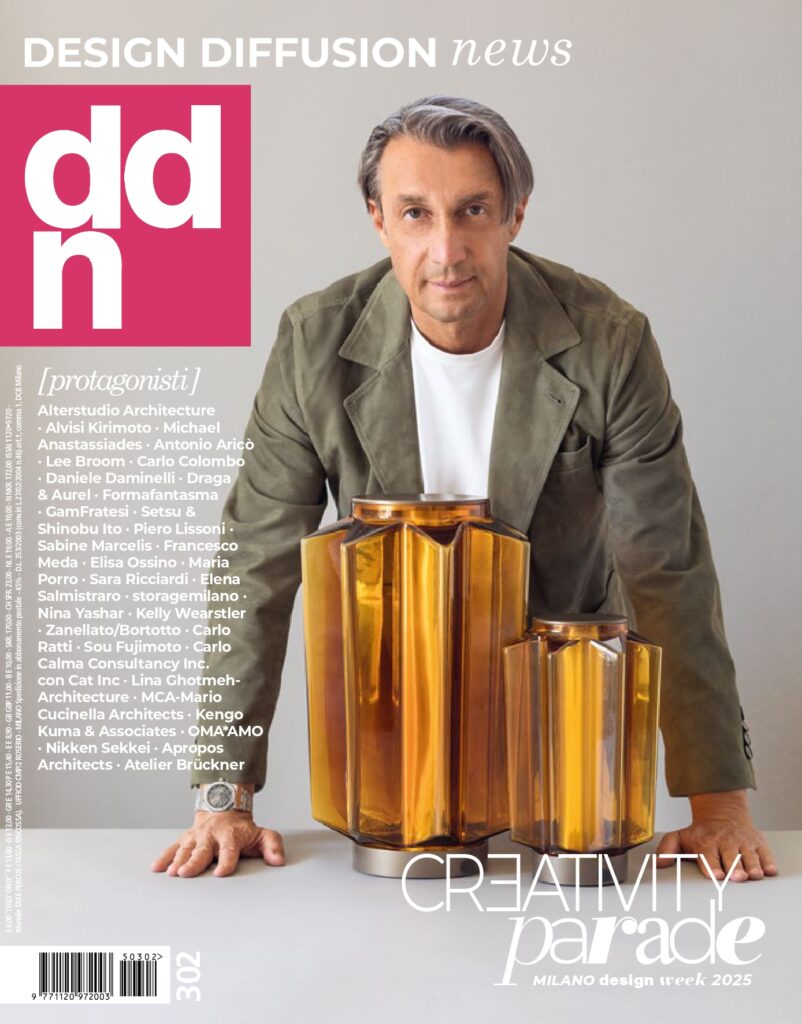The circular economy for vegetable dyes: natural colors obtained from recycled and totally plant-based materials
Albini Group, relying on over a century of tradition in the production of shirting fabrics, continues its collaboration with White Milano, where it has presented four new projects focused on sustainability.
Now that recycling has become increasingly important for a sustainable economy, design is striving to find solutions to reuse waste in creative ways. Albini has collaborated with several companies to produce dyes and finishes with sustainable and recycled materials.

Riso Gallo, one of the oldest rice growers in Italy, has provided the material for ALBINI_next, an innovative and ambitious upcycling project. Off the Grain – this is the name of the project – uses the boiling water used to process black rice, no longer usable for food use, to transform it into a natural dye. The dye obtained from this process also ensures a 30%-40% water saving.
Discover furniture in recycled plastic by EcoBirdy
The sustainable color of Albini_next
Grounded Indigo is a new natural textile dye. For this project, ALBINI_next has collaborated with Stony Creek, an American producer of natural dyes. Stony Creek Colors produces plant-based dyes in a new way that allows agricultural waste to be reused. As a result, Grounded Indigo is the world’s only 100% plant-based indigo, USDA BioPreferred™ certified, without chemical treatments or components.
Stony Creek Colors indigo is derived from the Indigofera suffruticosa plant, grown using regenerative agriculture practices in Tennessee, Kentucky and South Florida. Once harvested, the indigo plant undergoes three processing stages. After extraction, using water, the water separates from the biomass, the PH is adjusted, and a yellow liquid is obtained. In contact with air, the dye oxidizes and takes on the classic indigo color. Lastly, the pigment is dried and ground into a powder.

ALBINI_next also draws useful materials from waste of the household appliance industry. In fact, waste iron materials can be used to produce inorganic pigments based on iron oxide, which generate Re-Oxyde, a sustainable dyeing system.
Hemp oil, on the other hand, is the basis of a vegetable oil that is used for an innovative finishing, HempFeel. This product was created for the cosmetic industry, but ALBINI_next was the first company to apply it to fabrics of different weights, compositions and structures. HempFeel does not contain silicones and drastically reduces the release of microplastics from garments during household washing, also giving fabrics a very soft feel that lasts over time.














